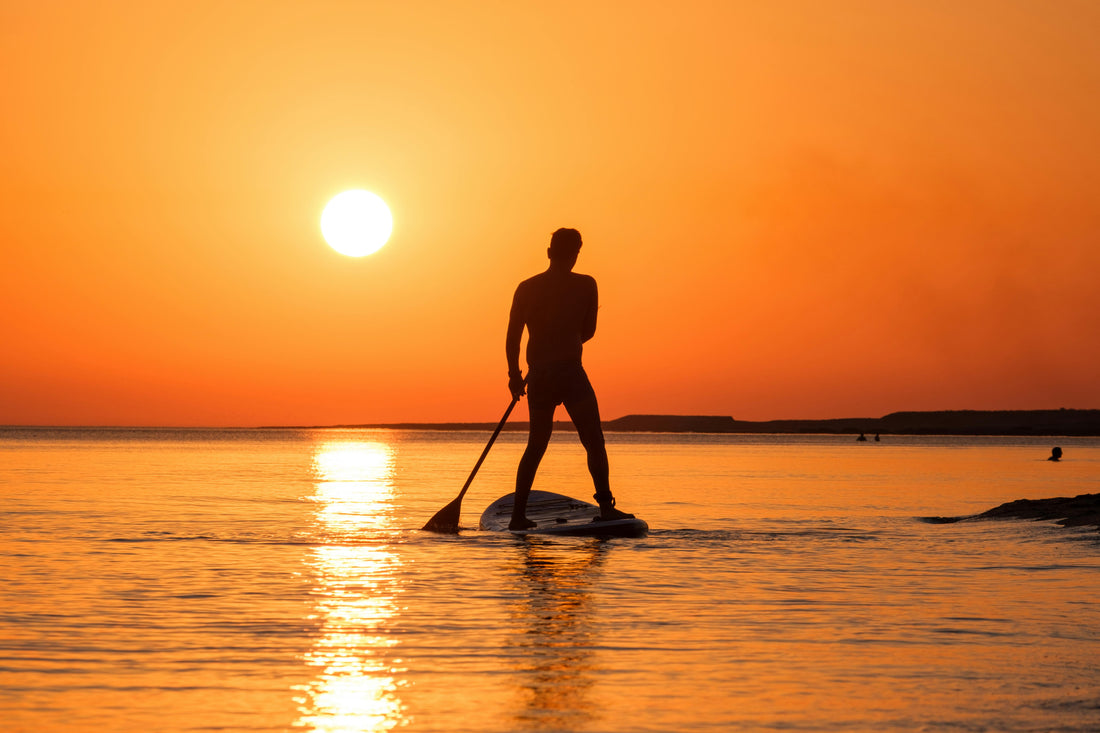
Ocean vs Lake vs River: What's the Best Place to Paddleboard?
Share
Paddleboarding is one of the most relaxing (and surprisingly adventurous) ways to enjoy the water—but not all paddleboarding spots are created equal.
Whether you're dreaming of gliding across a mirror-like lake, riding the gentle push of a river, or taking on the open sea, each environment offers a different kind of SUP experience. Here’s a breakdown of the main differences between paddleboarding on the ocean, lakes, and rivers, so you can choose the best setting for your next adventure.
🌊 Paddleboarding on the Ocean
Best for: Confident paddlers, thrill-seekers, coastal explorers
Conditions: Waves, tides, currents, wind
Pros:
-
Wide open space and stunning views
-
Great for building strength and balance
-
Opportunities for SUP surfing or wildlife spotting (think seals, dolphins, or seabirds)
-
Ideal for longer, exploratory paddles along the coastline
Cons:
-
Tides and currents can be strong and unpredictable
-
Wind can make it hard to paddle out or back in
-
Not beginner-friendly unless conditions are calm
Top tip: Check the tide times and wind forecast before you go. Early mornings tend to be calmer. A leash and life jacket are a must.
🏞️ Paddleboarding on Lakes
Best for: Beginners, families, peaceful paddlers
Conditions: Still water, minimal current, occasional breeze
Pros:
-
Flat water is perfect for learning or relaxing
-
Easy to launch and control your board
-
Safer environment for kids or pets
-
Gorgeous surroundings—especially in the UK’s Lake District or Scottish lochs
Cons:
-
Can get choppy in wind or exposed areas
-
Smaller lakes may feel limiting once you gain confidence
-
Less "flow" or excitement for adventurous types
Top tip: Choose a sheltered lake or loch for your first paddle. Early or late in the day = calmer water and beautiful light.
🌊 Paddleboarding on Rivers
Best for: Explorers, fitness paddlers, those looking for gentle flow
Conditions: Moving water, varied flow speeds, narrow spaces
Pros:
-
Constant movement helps build rhythm and endurance
-
Great for long-distance journeys or wildlife watching
-
More shaded and less windy than lakes or sea
-
Quieter and often more accessible
Cons:
-
Currents can be deceptive—harder upstream!
-
Low water levels or obstacles (branches, weirs)
-
You’ll need to plan your route carefully to avoid hazards
Top tip: Always check river levels and flow rates. Use a paddle map app or check with local SUP groups to find safe routes.
🧭 So, Which Should You Choose?
| Water Type | Skill Level | Vibe | Key Consideration |
|---|---|---|---|
| Ocean | Intermediate–Advanced | Wild & powerful | Tides, wind, waves |
| Lake | Beginner–All | Calm & scenic | Watch for wind |
| River | Intermediate | Adventurous & flowy | Current & route planning |
Final Thoughts
Each environment has its magic—and challenges. If you’re new to paddleboarding, start with a calm lake or gentle river section before venturing out onto the ocean. As you build skill and confidence, you’ll be able to tailor your paddling to your mood: peaceful lake glide, flowing river journey, or salty sea adventure.
Whichever you choose, always wear a leash, check the forecast, and bring the right safety gear. Nature can change quickly—and being prepared means staying safe and having more fun.
Explore more paddleboarding tips and outdoor-inspired gear at Wiffee – where scent meets adventure 🏞️💧